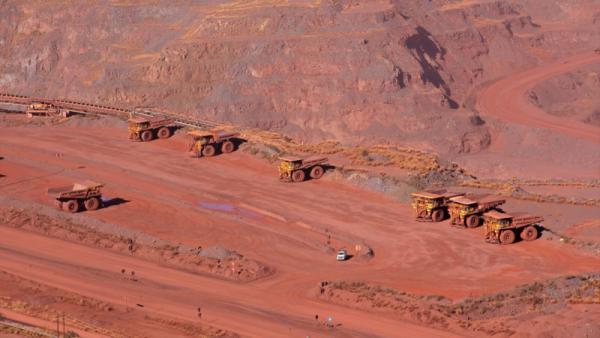EcoPrint / Shutterstock

James Laurenceson, Director, Australia-China Relations Institute, University of Technology Sydney |
This article appeared in The Australian Financial Review on September 21 2023.
Australia’s critical minerals policy risks going off the rails. The Albanese government is being urged to apply a zero-sum geopolitical lens that would see China designated only as a threat, not a potential partner. The reasons the sector is in the policy spotlight are well known.
As global demand for Australia’s fossil fuel exports enters a period of structural decline, critical minerals can pick up the earnings slack. And because it’s early days, there’s an opportunity to move beyond a ‘dig it up, ship it out’ model.
Then add in a strategic consideration of not wanting clean energy supply chains to have choke points that might be wielded against the US and its allies.
As Treasurer Jim Chalmers says, it’s a ‘generational opportunity that we cannot miss or mishandle’.
A new report by the Australian Strategic Policy Institute (ASPI) homes in on China’s prominence in critical minerals supply chains as the overriding factor that ought to animate Canberra’s approach.
Getting specific, it calls for the ‘prohibition of Chinese ownership over strategically essential commodities’, labelling it ‘a national security issue’.
The report references with alarm that Australia’s largest lithium mine, Greenbushes in Western Australia, is operated by a subsidiary of a ‘Chinese mining company’ whose founder and chairman has ‘strong links to the Chinese Communist Party’.
This description is disingenuous at best.
Greenbushes is, in fact, an Australia-China-US joint venture. All its owners are publicly listed companies. The largest single shareholder is the North Carolina headquartered mining giant Albermarle.
The mine’s output is sold via offtake arrangements proportional to these shareholdings. If most of the lithium is going to China, that’s because an American and an Australian company are also wanting to send their allocations there.
The backstory of Australia’s lithium industry is that a decade ago, Chinese investors like Tianqi and Ganfeng began providing patient capital to support an expansion in mining capacity, even as prices for the commodity were in the doldrums.
With export volumes and prices now booming, these companies are finally reaping the rewards. But so too is the Australian economy with lithium exports expected to reach $19.5 billion this year.
The ASPI report also urges taxpayer support for local investors and those from ‘like-minded’ countries to bring Australia’s downstream aspirations, such as minerals processing facilities, to life.
Escaping mention was Australia’s only operational facility capable of producing battery-grade lithium hydroxide. Located in Kwinana, Western Australia, this required zero taxpayer dollars. What made it possible was a $700 million commitment by Tianqi in 2016. The project also lent heavily on world-leading Chinese technology and specialist construction skills.
Previous Australian governments have understood that the national interest was best served by the mining sector being open to all foreign investors, including those from countries that are major customers, like China, Japan and Korea.
The logic is simple.
Australian assets can achieve their highest value by maximising competitive tension.
And by taking a non-discriminatory approach, a signal is sent to all foreign capitals that Canberra sees these trade and investment relationships being of long run benefit to both sides.
Consider how the lithium supply chain looks from Beijing.
Look elsewhere
True, China dominates lithium processing globally.
But Chinese processors are dependent on imports to meet three-quarters of their raw lithium demand. And, currently, 60 per cent of these imports come from Australia.
A discriminatory approach would mean that, unlike in decades past when Beijing and Chinese steel-makers could confidently assess that Australia was a reliable supplier of iron ore, China’s clean energy giants, like battery and EV manufacturers CATL and BYD, would be incentivised to aggressively develop lithium assets elsewhere.
With McKinsey estimating that between now and 2030, China’s demand for lithium is set to jump by triple that of the US, the opportunity costs for local producers are potentially massive.
Worryingly, there are signs that the Albanese government is heading in this direction.
A critical minerals strategy released in June emphasised increasing involvement from ‘like-minded’ partners. The US, the UK, Japan, South Korea, India and the EU all got a mention. But not China.
The Treasurer has also blocked two proposed Chinese investments in the sector over the past year, leading to speculation that a de-facto prohibition already exists.
Even as Canberra needs to be alive to geopolitical risks emanating from China, it cannot afford to be naive.
Earlier this month saw an announcement of a ‘huge lithium discovery’ in Nevada. If US consumers can access competitive domestic supply, who imagines they would still choose to import from Australia?
There has been some excitement that the Biden administration’s Inflation Reduction Act (IRA) might be a boon for Australian companies. But tapping into the subsidies and grants that Washington is offering will typically involve setting up shop in the US, such as the rare earths processing facility that Lynas is building in Texas. The bigger picture of the IRA, according to independent experts like Ross Garnaut, is that its ‘protectionist character is bad news for Australia’.
Why not welcome Chinese investment if it takes the form of a joint venture with a local partner? Or condition approval on output being made available on global markets and/or supporting Australia’s downstream capabilities?
It’s not too late for Canberra to settle on a positive-sum approach where geopolitics is just one consideration. The prime minister could even deliver the message personally when he visits Beijing this year.
Author
Professor James Laurenceson is Director of the Australia-China Relations Institute at the University of Technology Sydney.


